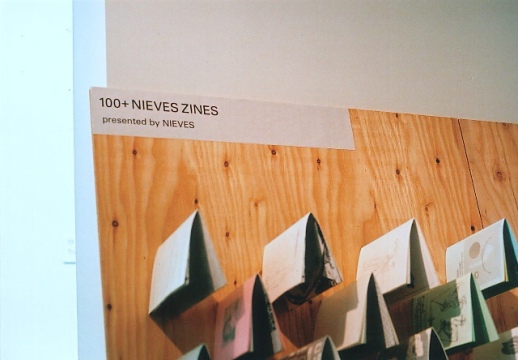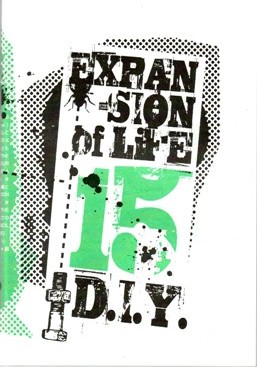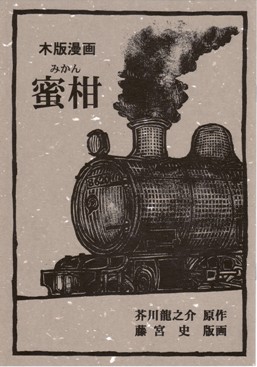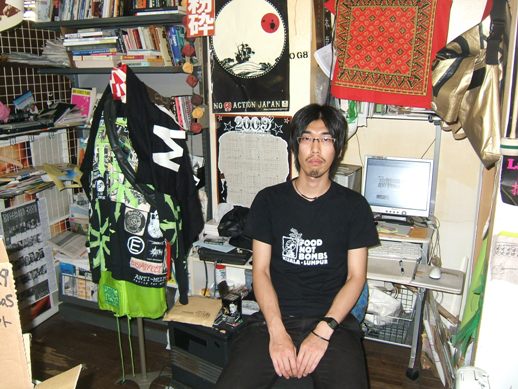Shy Revolutionaries
Zinedom is a mostly underground world that usually flies under the radar of the mainstream media. Only once in a while a zinester gathers enough followers to grab briefly the attention of some major publication or TV channel. However zine-making is a global phenomenon with thousands of practitioners who sell and trade their small (sometimes micro) publications at specialized stores and through the mail. Born around the mid-1800s when the first small home-printing machines allowed people to produce their own journals cheaply, zines are unadulterated, unfiltered purveyors of creative ideas and honest opinions.
While the Americas, Europe and Australia abound in zines, Asia seems to be poorly represented in the international network, for cultural, political and technological reasons. What is surprising is that even Japan, which in many respects belongs to the West, is under-represented. This is partly due to the language barrier, and also to a certain unwillingness to open up and join a wider international community.

Recently there has been a tendency to apply the term ‘zine’ to publications that are not zines in the traditional sense of the word. Such publishers as Utrecht (that runs the NOW IDeA gallery-bookstore in central Tokyo) often apply this term to many of the things they sell, even though they actually are small fine art books and magazines, very well designed but much more expensive.
Another unique thing about Japan is the huge dojinshi phenomenon. These are underground self-published comics. Initially they consisted of original stories and characters, but they shifted to parody by taking characters from established comics, famous novels and movies, and placing them in new stories, alternative couplings, or parallel worlds. Some of them are so popular that they sell thousands of copies. They clearly infringe copyright laws, but the publishers seldom sue them because, after all, they play an important role in creating a faithful fan base.


Keisuke Narita (or Kei-san, as everybody calls him) is a very mellow guy in his early thirties, whom you can find most days at Irregular Rhythm Asylum (IRA), a tiny radical info-shop [a social centre and store that sells zines] in Shinjuku. Though hardly charismatic at first sight, he has almost single-handedly managed to attract some of the best minds in the Japanese angura (underground) scene and make local DIY culture thrive.
Kei-san: About twenty years ago I was into punk and DIY. I couldn’t play any instruments but I wanted to express myself in some way because there were some things I couldn’t accept like war, politics, and mainstream media. So I created my first zine, Expansion of Life, that I still make even though it’s currently on hiatus. This way I met many interesting people. The next step was to start a distro [zine distribution service] through which we could trade and distribute all those people’s zines and music.
And now this shop…
Kei-san: Yes, a friend of mine offered me to share a space, so I opened IRA in 2004. The best thing in all this is that IRA has become a pole of attraction for many people in the activist/DIY scene, and we are still growing. We are also reaching out to zinesters and other creative types abroad.
How about the bottom line?
Kei-san: For several years we were in the red. Recently we have reached a point in which the stuff we sell through the shop and distro more or less covers our expenses. Obviously I don’t make a living through this. But I don’t care about money. What I want to support is people’s autonomy and creativity, not the market, and I feel the alternative scene is finally growing in Japan too.
Speaking of “stuff,” what can people find at IRA?
Kei-san: We sell CDs (mostly punk), clothes, badges, and then of course new and old books (anarchist literature, indie publishers such as AK47 Press) and zines. Most of these are in Japanese but we have many in English as well. But as I said, IRA is first and foremost a meeting point. You can come here, relax on the sofa, have a nice cup of coffee while chatting with other interesting people, and spend as much time as you want. We also organize events, concerts and movie viewings (both here and in other venues). On Thursdays, for instance, we have a clothes-making circle. I actually graduated from a fashion college!

Irregular Rhythm Asylum
1-30-12-302 Shinjuku, Shinjuku-ku
(03) 3352-6916
13:00-20:00
Closed Mondays & Wednesdays.
http://a.sanpal.co.jp/irregular/
In the next interview TABlog will be talking to Nagoya-based zinester Adam Pasion.
TABlog also recently interviewed PAPERBACK Magazine’s Oliver Watson and Utrecht’s Hiroshi Eguchi, the two directors of Zine’s Mate.
Randy Swank
Randy Swank



